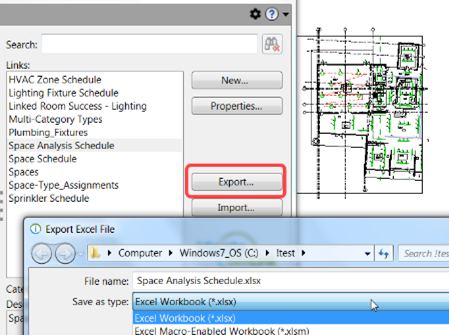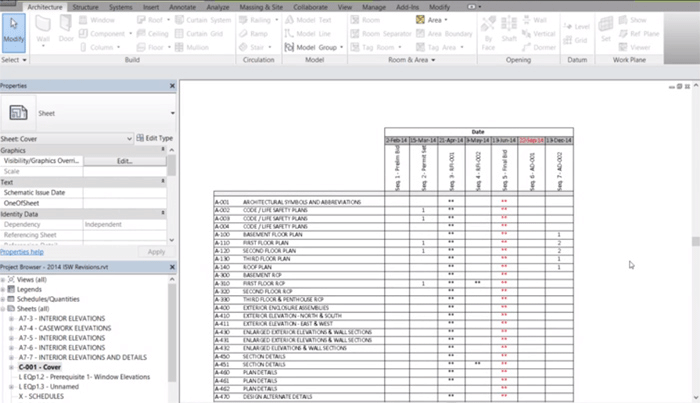Revit Add Ins: Broadening Your Style Capacities
Wiki Article
Excel-to-Revit: A Game-Changing Process for Architectural Design - Introducing the Secrets
Introducing excel-to-revit, the game-changing process that will certainly transform your style procedure. With excel-to-revit assimilation, you can enhance your building layout, unlock performance, and make the most of collaboration within your team. Get all set to take your architectural layout to the following level with excel-to-revit!The Power of Excel-to-Revit Integration

Imagine the convenience of being able to edit and upgrade task data in Excel, and promptly see those changes shown in your Revit design. Say goodbye to manual data entry or laborious updates. With Excel-to-Revit integration, you can conserve time and lower errors by leveraging the power of Excel's features and solutions to immediately generate precise data in Revit.
Not just does this assimilation enhance efficiency, however it additionally improves partnership amongst employee. You can easily share Excel files with coworkers, who can after that import the information right into their Revit designs. This advertises a smooth exchange of details and guarantees that everyone is collaborating with one of the most up-to-date information.

Simplifying Architectural Style With Excel-To-Revit
Simplifying building layout is simplified with making use of Excel-to-Revit (import excel into revit). With this effective combination, you can optimize your process and conserve valuable time throughout the style procedure. By leveraging the capabilities of Excel and Revit, you can effortlessly move information in between both systems, eliminating the need for manual data access and minimizing the threat of errorsExcel-to-Revit permits you to import and export data easily, allowing you to conveniently update and customize your building styles. You can develop timetables, compute quantities, and generate reports in Excel, and after that transfer that information directly right into your Revit design. This combination makes sure that your style info is constantly updated and integrated, removing the demand for hands-on updates and lowering the opportunities of variances.
By utilizing Excel-to-Revit, you can likewise make the most of the effective computational abilities of Excel. You can perform complex calculations, evaluate data, and automate repetitive tasks, all within Excel. With simply a few clicks, you can import the results back right into Revit, permitting you to make educated style choices and maximize your building styles.
Opening Performance: Discovering the Excel-to-Revit Workflow
Optimize your performance by flawlessly incorporating Excel and Revit for an extra efficient process. With the Excel-to-Revit process, you can open an entire brand-new level of effectiveness in your architectural style procedure. By using the power of Excel's information management capabilities and incorporating it with the adaptability and precision of Revit, you can improve your design procedure and conserve useful time.One of the essential advantages of this assimilation is the capacity to import and export information between Excel and Revit. This implies that you can quickly transfer task details, such as space schedules or product amounts, from one software application to the other, removing the requirement for hand-operated information access and minimizing the opportunities of mistakes. You can likewise create useful reference customized formulas and estimations in Excel to automate recurring tasks and execute complex estimations, which can then be flawlessly incorporated into your Revit designs.
In Addition, the Excel-to-Revit operations permits far better control and cooperation in between staff member. With Excel working as a main data center, multiple group participants can function on different facets of the job all at once, sharing and upgrading info in real-time. This not just enhances interaction however additionally makes sure that everyone is working with one of the most updated data, removing the danger of disparities.
Taking Full Advantage Of Collaboration: Excel-to-Revit for Architectural Teams
By flawlessly incorporating Excel and Revit, building teams can considerably improve partnership and accomplish much more effective layout outcomes. When using this powerful workflow, you can quickly move data between Excel spread sheets and Revit versions, simplifying the layout process and improving interaction amongst staff member. With Excel-to-Revit integration, you can effortlessly import task data, such as room timetables, product amounts, and task criteria, straight into Revit, removing the demand for manual data entry and decreasing the possibilities of mistakes. This smooth link enables for real-time updates, making certain that everybody is collaborating with one of the most current details and avoiding disparities in between different records.Additionally, by leveraging Excel's powerful estimation abilities, you can execute complicated computations and analysis on your layout information, giving important understandings and driving notified decision-making. This integration also allows you to export information from Revit to Excel, enabling you to develop extensive records, charts, and graphs for discussions and evaluation. This collective process promotes effective interaction and sychronisation amongst group participants, as Excel serves as a central center for data administration and sharing.
Overall, by accepting the try this Excel-to-Revit workflow, building teams can accomplish greater degrees of collaboration, performance, and precision in their layout procedure. revit tools. This combination empowers groups to collaborate flawlessly, making certain that every read person is on the same page and adding to the success of the job
Revealing the Secrets of Excel-to-Revit Assimilation

One of the keys of Excel-to-Revit integration is the capability to utilize the power of formulas and calculations in Excel to drive specifications and create complex geometries in Revit. You can connect Excel spread sheets to Revit households, enabling you to input information straight into the spread sheet and have it automatically update in the Revit design. This enhances the style process and makes certain precision and consistency throughout the project.
An additional trick is the capability to produce customized schedules and records in Excel, making use of information removed from Revit. This allows you to analyze and imagine task information in a manner that is not feasible within Revit alone. You can conveniently create amount liftoffs, expense quotes, and project timelines, providing useful understandings for decision-making and task monitoring.
On top of that, Excel-to-Revit integration allows efficient cooperation among team participants. Multiple users can service the very same Excel spreadsheet concurrently, making it less complicated to collaborate and track modifications. You can additionally make use of Excel's commenting function to offer feedback or communicate design revisions.
Verdict
By integrating the power of Excel and Revit, designers can currently function much more effectively, save time, and generate much better layouts. Beginning including excel-to-revit assimilation right into your building design process today and change the method you work.With just a couple of clicks, you can import the outcomes back into Revit, allowing you to make enlightened layout decisions and optimize your architectural layouts.
By using the power of Excel's data management capacities and integrating it with the versatility and precision of Revit, you can simplify your style process and conserve useful time.
By perfectly integrating Excel and Revit, architectural groups can significantly improve partnership and attain a lot more effective design results. When using this effective process, you can quickly move information between Excel spreadsheets and Revit models, streamlining the layout process and boosting communication among team participants.Additionally, by leveraging Excel's effective calculation abilities, you can execute complicated estimations and evaluation on your design information, providing useful understandings and driving notified decision-making.
Report this wiki page